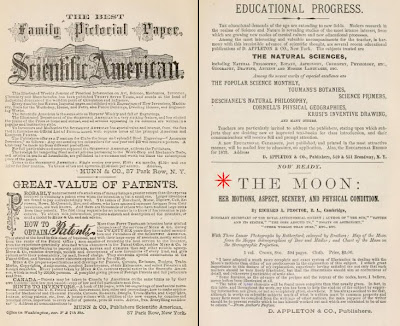O but I am beside myself with glee. Popular Science worked with Google Books to archive all 137 years of their publications! Completely free of charge.
When the weather and clocks both change, I enjoy brief bouts of insomnia, at which point websites like this are exceedingly useful.
The Popular Science Monthly began in 1872 as a newsprint periodical and continued in a textbook style through the turn of the century. Regular ads showed up around 1912. The format switched from black & white to color in 1919 at the same time they cut the name down to Popular Science.
Being able to see the progression as a time-line is fascinating, especially when moving through various inventions and scientific breakthroughs that we now consider commonplace. More startling are the medicinal products (Bayer heroin drops, anyone?), and the sheer amounts of cigarette and pipe tobacco ads!
You can see the original cover at the top of each archive file, and a helpful hyper-linked Table of Contents accompanies each issue.

The earliest space article is The Moon in the October 1873 issue (ironically beside an ad for Scientific American, established in 1845); mostly telescopic observation, obviously, but almost lyrical in its reverence for the mystery that was the lunar world in those days! Other highlights for fellow space enthusiasts:
November 1873: The Ringed Planet
The nature of Mars, Saturn and Jupiter as known in the era of the "Indian Wars" when Ulysses S. Grant was president.
December 1927: Myths About Mars Exploded
An astronomer claims that Mars is just a bleak red desert? No way! Way.
February 1962: 10 Toughest Problems Putting a Man On the Moon
Space race! This enchanting piece shows early official NASA drawings of how they hoped to put humans on the lunar surface (dig that crafty spacesuit!).
January 1918: Clap! Let There Be Light
Not space-related, but this caught my eye and made me laugh – it's about activating light bulbs via sound-operated circuit controllers. That's right, a WWI-era clapper!

Left: A vision in 1919 of how we might communicate with Mars
Right: Technology in 1936, between the World Wars
Right: Technology in 1936, between the World Wars
The earliest works use flowery prose to describe [oft-questionable] scientific methods in fairly artistic terms, and focus on the more splendorous aspects of the "knowns vs. unknowns" of science, not merely the mechanics of what can be 'documented' or dryly 'tested.' Sometimes authors quote poetry, openly lament the ramifications to conflicting divine beliefs, and even (now all but eradicated from modern science rags) ponder the philosophical meanings of their observations.
As they move through the eras, the influence of marketing flourishes (of course), and a bent toward technology becomes apparent. The gadget-happy 1950s are particularly amusing. Hey, we were supposed to have moon colonies, robot lawnmowers and commute-to-the-office jet packs by now!
I've been on this sucker all night, so I apologize in advance to anyone who doesn't get any work done after finding this today =)



































































